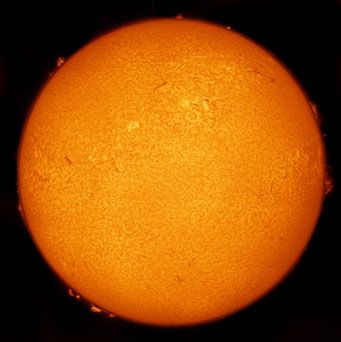- Forum
- General Discussion | Introductions | Off Topic Forum
- Photography General Discussion
- What filter is needed to photograph the sun?
What filter is needed to photograph the sun?
-
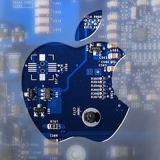 Topic Author
Topic Author
- Karen Comella
- Snapobsessed
-
- Canon 5D Mark III
- Followers: 145
- Posts: 486
-
Points:
5370
Post #481238
I'm wondering if I need top buy one of those smaller telescopes for this?
-

- effron
- Newbie
- Followers: 1623
-
Points:
129640
Post #481320
From Photo.net....
The Sun - The sun, when in a clear sky and anywhere but a few degrees above the horizon can easily damage your camera/lens, and more importantly your eyes, if you look at it for long enough. You need a filter, and if you intend to look through it as well as photograph through it, it must be a filter designed for visual use. Some filters block visible light but pass IR. Exposed film is an example of one such filter. Unless you are an idiot, intent on becoming a one-eyed idiot, don't use anything but a properly designed visual filter to look at the sun! Check out any issue of "Astronomy" or "Sky and Telescope" magazine for suppliers of solar filters for visual use. You can also check this link to a NASA site for a list of solar filter suppliers. With any lens or telescope used to observe the sun, the filter goes on the FRONT of the optics. This is very important. Stick a 5ND or 6ND filter in the slot at the back of your 600/4 and point it at the sun and you will soon be very sorry indeed that you did. Al the light and heat will be concentrated on the filter and it will crack, possibly damaging your lens, camera and you. Even if it doesn't crack there is still a good chance you will damage some of the smaller internal lens elements due to heating. Exposure depends on the exact filter you use, but you should aim for something in the 1/250 and faster range to avoid problems with camera/lens shake when using a really long lens.
Why so serious?
Post #481323
will be a big deal next year. You might want to get set up with a entry level scope and they have a range of filters for photographing the sun: www.amazon.com/s/?ie=UTF8&keywords=celes...f=pd_sl_78froy5zyc_b
-
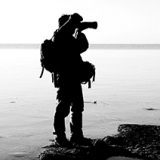
- Mark Saunder
- New Kid On The Block
-
- Nikon D700
- Followers: 7
- Posts: 23
-
Points:
177
Post #481347
-

- H Rocky
- Snapobsessed
- Followers: 87
- Posts: 291
-
Points:
3656
-

- Mason Katz
- Lone Wolf
-
- Nikon D7100
- Followers: 107
- Posts: 195
-
Points:
1692
Post #481374
CaptNemo wrote: To photograph this: www.eclipse2017.org/2017/path_through_the_US.htm
will be a big deal next year. You might want to get set up with a entry level scope and they have a range of filters for photographing the sun: www.amazon.com/s/?ie=UTF8&keywords=celes...f=pd_sl_78froy5zyc_b
-
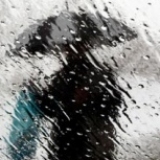
- Jeffster
- Photography Hooked
-
- Nikon D300 and Canon Rebel
- Followers: 136
- Posts: 580
-
Points:
1365
-
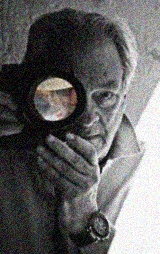
- Roy Wilson
- The Lounger
-
- Canon 5D Mark II
- Followers: 231
- Posts: 1257
-
Points:
9557
Post #481434
CaptNemo wrote: To photograph this: www.eclipse2017.org/2017/path_through_the_US.htm
will be a big deal next year. You might want to get set up with a entry level scope and they have a range of filters for photographing the sun: www.amazon.com/s/?ie=UTF8&keywords=celes...f=pd_sl_78froy5zyc_b
Yes, this is going to be a spectatorial event. Everyone in North America should be able to experience this.
Canon 5D Mark II, 30D, 40D, 50 1.2L, 16-35 2.8L Mark II, 24-105 4L IS, 24-70 2.8L, 70-200 2.8L IS, 85 1.8, 4 x 580 EX(II)
-

- Scotty
- Agent 007
- James Bond, PT mod.
- Followers: 1088
- Posts: 9863
-
Points:
14659
Post #481468
effron wrote: You don't want to photograph the sun directly, and the longer lens you would use, the more dangerous for you and your camera's sensor......
From Photo.net....
The Sun - The sun, when in a clear sky and anywhere but a few degrees above the horizon can easily damage your camera/lens, and more importantly your eyes, if you look at it for long enough. You need a filter, and if you intend to look through it as well as photograph through it, it must be a filter designed for visual use. Some filters block visible light but pass IR. Exposed film is an example of one such filter. Unless you are an idiot, intent on becoming a one-eyed idiot, don't use anything but a properly designed visual filter to look at the sun! Check out any issue of "Astronomy" or "Sky and Telescope" magazine for suppliers of solar filters for visual use. You can also check this link to a NASA site for a list of solar filter suppliers. With any lens or telescope used to observe the sun, the filter goes on the FRONT of the optics. This is very important. Stick a 5ND or 6ND filter in the slot at the back of your 600/4 and point it at the sun and you will soon be very sorry indeed that you did. Al the light and heat will be concentrated on the filter and it will crack, possibly damaging your lens, camera and you. Even if it doesn't crack there is still a good chance you will damage some of the smaller internal lens elements due to heating. Exposure depends on the exact filter you use, but you should aim for something in the 1/250 and faster range to avoid problems with camera/lens shake when using a really long lens.
+1
When the last candle has been blown out
and the last glass of champagne has been drunk
All that you are left with are the memories and the images-David Cooke.
-

- Happy-pixel
- Photography Hooked
-
- Nikon D700
- Followers: 113
- Posts: 551
-
Points:
2630
Post #481469
effron wrote: You don't want to photograph the sun directly, and the longer lens you would use, the more dangerous for you and your camera's sensor......
From Photo.net....
The Sun - The sun, when in a clear sky and anywhere but a few degrees above the horizon can easily damage your camera/lens, and more importantly your eyes, if you look at it for long enough. You need a filter, and if you intend to look through it as well as photograph through it, it must be a filter designed for visual use. Some filters block visible light but pass IR. Exposed film is an example of one such filter. Unless you are an idiot, intent on becoming a one-eyed idiot, don't use anything but a properly designed visual filter to look at the sun! Check out any issue of "Astronomy" or "Sky and Telescope" magazine for suppliers of solar filters for visual use. You can also check this link to a NASA site for a list of solar filter suppliers. With any lens or telescope used to observe the sun, the filter goes on the FRONT of the optics. This is very important. Stick a 5ND or 6ND filter in the slot at the back of your 600/4 and point it at the sun and you will soon be very sorry indeed that you did. Al the light and heat will be concentrated on the filter and it will crack, possibly damaging your lens, camera and you. Even if it doesn't crack there is still a good chance you will damage some of the smaller internal lens elements due to heating. Exposure depends on the exact filter you use, but you should aim for something in the 1/250 and faster range to avoid problems with camera/lens shake when using a really long lens.
-

- Vahrenkamp
- Master of the Lens
-
- Nikon D800
- Followers: 287
- Posts: 1605
-
Points:
7635
-

- Garbo
- The Lounger
-
- Nikon D300
- Followers: 188
- Posts: 1273
-
Points:
10288
-

- Garbo
- The Lounger
-
- Nikon D300
- Followers: 188
- Posts: 1273
-
Points:
10288
-

- Crazyguy
- Photography Hooked
-
- Nikon D300
- Followers: 118
- Posts: 531
-
Points:
3010
Post #481759
To the OP, and anyone interested, here are the best filters thousandoaksoptical.com/solar.html I prefer the glass filters for durability. What you will get as for details on the sun is black spots. Tehese filters are for getting your feet wet into it. To get any of the prominence details such as flares, you have to go to a whole other level, and hence more cost. It takes a filter set that do many things to see that. Those Corona scopes are really a bargain, and you can get adapters to mount you camera to them.
- Forum
- General Discussion | Introductions | Off Topic Forum
- Photography General Discussion
- What filter is needed to photograph the sun?
Latest Reviews
Nikon’s retro-looking Nikon Zfc is anything but retro. Under its classic body is a host of features and amenities that make it a worthwhile compact mirrorless camera for 2024.
The Canon EOS R50 is one of the newest R-system cameras from Canon. Is it worth your money? Find out all the details you need to know in this comprehensive review.
The Sony FE 70-200mm f/2.8 GM OSS II is Sony’s flagship mirrorless zoom lens. As such, it’s loaded with features and has a top-shelf build quality that makes it a top pick!
The Leica SL2-S is an attractive, premium mirrorless camera with photo and video specs that are sure to impress. And with the legendary Leica name, you know this camera exudes quality!
Forum Top Posters
-
1TCav 7 posts
-
2CharleyL 5 posts
-
3Razky 5 posts
-
4Randy Shaw 5 posts
-
5Prago 4 posts
-
6Matt VanDyke 4 posts
-
7Otto F 4 posts
-
8Conner 3 posts
-
9Sandy Smith Photos 3 posts
-
10Hassner 3 posts
Latest Articles
The Olympus OM-D E-M10 Mark IV is a micro four thirds camera released in 2020. It’s an entry-level system along with the OM-D E-M5 Mark III. Use this guide to determine which one is best for you!
Blue hour photography might not be as well known as golden hour photography, but it is every bit as good a time to create epic images of landscapes. Learn how in this quick tutorial!
Nikon’s retro-looking Nikon Zfc is anything but retro. Under its classic body is a host of features and amenities that make it a worthwhile compact mirrorless camera for 2024.
Moving from taking snapshots of your dog to creating beautiful images doesn’t have to be that difficult! Use the tips outlined in this dog photography guide, and you’ll get better results in no time.
Acrylic print photos are a beautiful way to display your favorite images. But they don’t come without some questions. Get all the answers you need about this medium in this guide!
Where do you get your landscape photography inspiration? Is it from masters like Ansel Adams? Or perhaps viewing art from other genres? We’ve got these and a few other sources for you to check out!
The Canon EOS R50 is one of the newest R-system cameras from Canon. Is it worth your money? Find out all the details you need to know in this comprehensive review.
Too often, affordable online printing companies don’t meet your expectations of what a print should look like. But there are some choices that combine affordability with superb quality!








